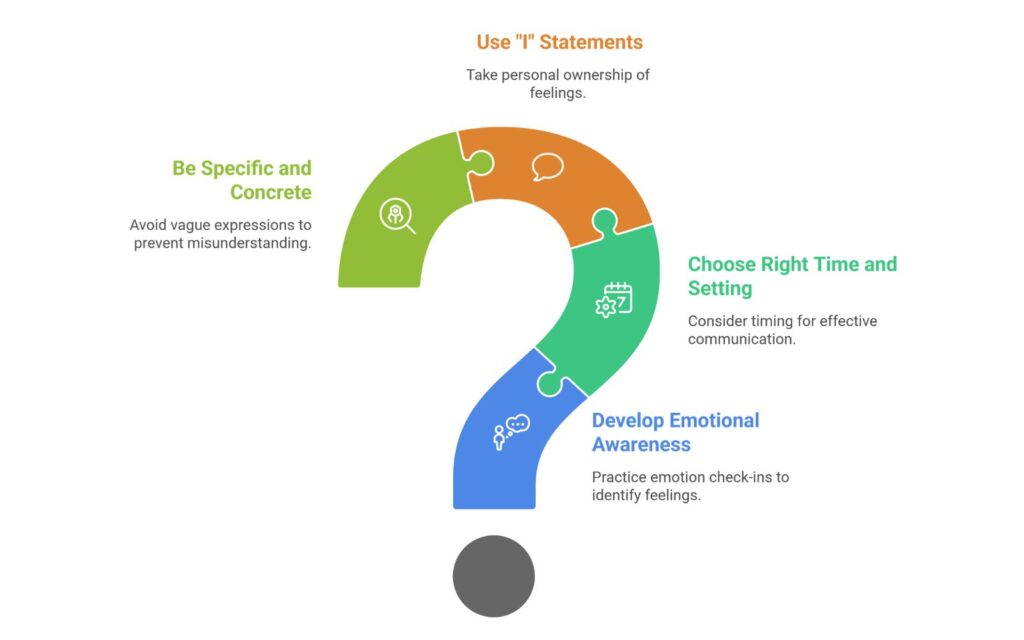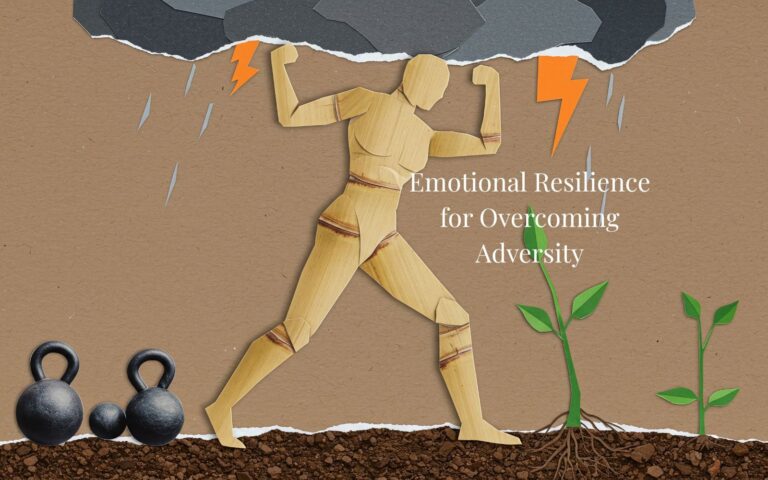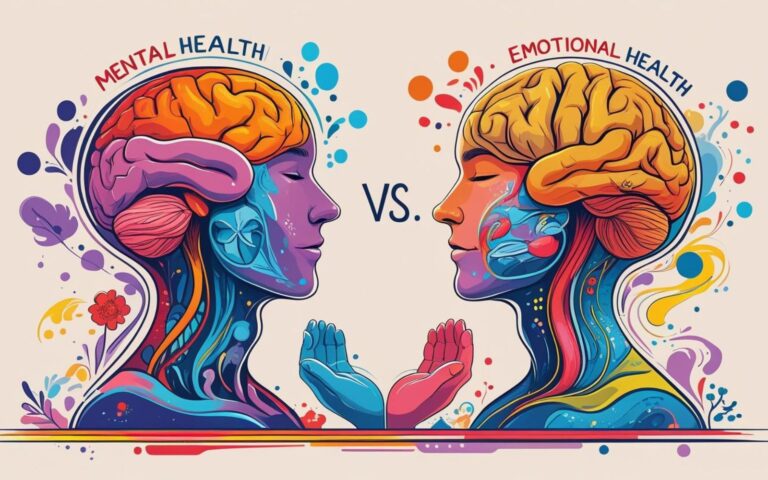How to Express Feelings Appropriately: Transform Your Relationships and Work-Life Balance Through Mindful Communication

Did you know that 93% of communication effectiveness comes from non-verbal cues and tone, yet most of us never learned how to express feelings appropriately? Whether you’re navigating workplace tensions, family dynamics, or personal relationships, the ability to communicate emotions effectively can make or break your connections with others.
Learning how to express feelings appropriately isn’t just about avoiding conflict-it’s about creating deeper understanding, building trust, and maintaining healthy boundaries.
This skill becomes even more crucial when balancing demanding careers with personal well-being, especially for those committed to sustainable living and mindful communication practices.
As someone who has spent over a decade studying emotional intelligence and helping individuals improve their communication skills, I’ve witnessed firsthand how proper emotional expression can transform relationships and reduce stress.
In this guide, you’ll discover practical strategies, evidence-based techniques, and actionable steps to communicate your feelings with clarity and compassion.
Key Takeaway
Expressing feelings appropriately involves three core elements: self-awareness to identify your emotions accurately, timing to choose the right moment for communication, and technique to deliver your message with respect and clarity. When mastered, this skill enhances every aspect of your life from professional relationships to personal well-being.
Understanding Emotional Expression: The Foundation

Why Appropriate Emotional Expression Matters
Emotional expression serves as the bridge between our inner world and our relationships with others. When we know how to express feelings appropriately, we create space for authentic connection while maintaining respect for boundaries.
Research from the American Psychological Association shows that individuals who communicate emotions effectively experience 40% less relationship stress. They also report higher job satisfaction and better work-life balance, particularly important for those juggling multiple responsibilities while maintaining eco-conscious lifestyles.
The Science Behind Healthy Emotional Communication
Neuroscience reveals that unexpressed emotions activate our stress response systems, leading to physical tension and mental fatigue. Dr. Matthew Lieberman’s research at UCLA demonstrates that simply naming our emotions reduces activity in the amygdala-our brain’s alarm system.
This biological response explains why learning to express feelings appropriately isn’t just emotionally beneficial-essential for physical health and sustainable energy management.
How to Express Feelings Appropriately: A Step-by-Step Guide

Step 1: Develop Emotional Awareness
Before you can express feelings appropriately, you must first identify what you’re experiencing. Practice the “emotion check-in” technique three times daily.
Pause and ask yourself: “What am I feeling right now?” Name the specific emotion rather than using vague terms like “bad” or “stressed.” This practice builds the emotional vocabulary necessary for clear communication and supports emotional intelligence.
Step 2: Choose the Right Time and Setting
Timing significantly impacts how your message is received. Avoid expressing intense emotions when you or the other person are rushed, tired, or distracted.
Create a calm environment free from distractions. For workplace situations, schedule dedicated time for important conversations rather than catching someone between meetings. Consider how workplace stress management affects the timing of these conversations.
Step 3: Use “I” Statements
Transform blame-focused language into personal ownership of your feelings. Instead of “You never listen to me,” try “I feel unheard when our conversations are interrupted.”
This approach reduces defensiveness and opens space for genuine dialogue. It’s particularly effective in maintaining harmony while addressing important issues and supports emotional wellness in the workplace.
Step 4: Be Specific and Concrete
Vague emotional expressions often lead to misunderstanding. Replace “You always make me angry” with “I felt frustrated when the project deadline changed without discussion because it affects my work-life balance.”
Specificity helps others understand your perspective and creates opportunities for collaborative problem-solving through effective task prioritization strategies.
Advanced Techniques for Different Relationships

Professional Settings: Maintaining Boundaries While Being Authentic
In workplace environments, learning how to express feelings appropriately requires balancing professionalism with authenticity. Use the “SBI” model: Situation, Behavior, Impact.
Describe the specific situation, the observed behavior, and the impact on you or the team. This method keeps discussions objective while acknowledging emotional responses and supports mental wellness in the workplace.
Personal Relationships: Building Deeper Connections
With family and friends, you can be more vulnerable while still maintaining respect. Share your feelings as gifts of trust rather than demands for change.
Practice active listening when others share their emotions, creating reciprocal emotional safety that strengthens relationships over time. This aligns with emotional well-being strategies for success.
Common Obstacles and How to Overcome Them

Dealing with Emotional Overwhelm
When emotions feel too intense, use the “pause and breathe” technique. Take three deep breaths before speaking, allowing your nervous system to regulate.
This practice aligns with mindful living principles and prevents reactive communication that often damages relationships. Consider incorporating meditation techniques for stress relief into your daily routine.
Managing Fear of Vulnerability
Many people avoid expressing feelings appropriately due to fear of rejection or judgment. Start small by sharing minor frustrations or appreciations with trusted individuals.
Gradually build your comfort level with emotional expression, recognizing that vulnerability often strengthens rather than weakens relationships. Mindfulness practices can help you become more comfortable with emotional expression.
Practical Takeaways
- Practice daily emotion check-ins to build self-awareness and emotional vocabulary
- Use “I” statements to take ownership of your feelings without blaming others
- Choose appropriate timing by ensuring both parties are calm and available for conversation
- Be specific about situations rather than making general statements about character or behavior
- Start with low-stakes conversations to build confidence before addressing major issues
- Consider how your workplace environment affects emotional communication
- Take advantage of mindful work breaks to process emotions before important conversations
Summary
Learning how to express feelings appropriately transforms both personal and professional relationships while supporting overall well-being. The key lies in developing self-awareness, choosing appropriate timing, and communicating with specificity and respect.
These skills become especially valuable for individuals balancing demanding lifestyles while maintaining authentic connections with others and supporting their essential factors for mental health.
By implementing the techniques outlined in this guide-from emotion check-ins to using “I” statements-you’ll create healthier communication patterns that reduce stress and deepen relationships through eco-friendly ways to reduce workplace stress.
Remember that mastering emotional expression is a gradual process that requires patience and practice.
Start with one technique today, whether it’s practicing daily emotion awareness or having one honest conversation using “I” statements. Your relationships and overall quality of life will benefit from this investment in emotional intelligence and workplace mindfulness.
FAQs About How to Express Feelings Appropriately
What’s the difference between expressing feelings appropriately and being too emotional?
Expressing feelings appropriately involves conscious choice about timing, setting, and delivery method, while being “too emotional” typically refers to reactive, uncontrolled emotional expression. The key is self-awareness and intentionality in your communication approach.
How can I express feelings appropriately when I’m really angry?
When experiencing intense anger, take time to cool down before engaging in conversation. Use the 24-hour rule for major conflicts, practice deep breathing, and focus on the specific behavior or situation rather than attacking the person’s character.
Is it appropriate to express negative feelings at work?
Yes, when done professionally and constructively. Focus on how situations impact your work performance or team dynamics rather than personal grievances. Use specific examples and suggest solutions when possible.
How do I help someone else learn to express feelings appropriately?
Model healthy emotional expression yourself, listen without judgment when others share feelings, and gently redirect conversations toward specificity when someone uses vague or blaming language. Avoid giving unsolicited advice about emotional expression.
What should I do if someone reacts poorly when I express feelings appropriately?
Stay calm and stick to your boundaries. You can only control your own communication, not others’ reactions. If someone consistently responds poorly to respectful emotional expression, consider whether the relationship dynamics need to be addressed or if professional support might be helpful.
Ready to improve your emotional communication? Share your biggest challenge with expressing feelings in the comments below, and let’s support each other in building healthier relationships.
Found this helpful? Share this guide with someone who could benefit from better emotional expression skills!






One Comment